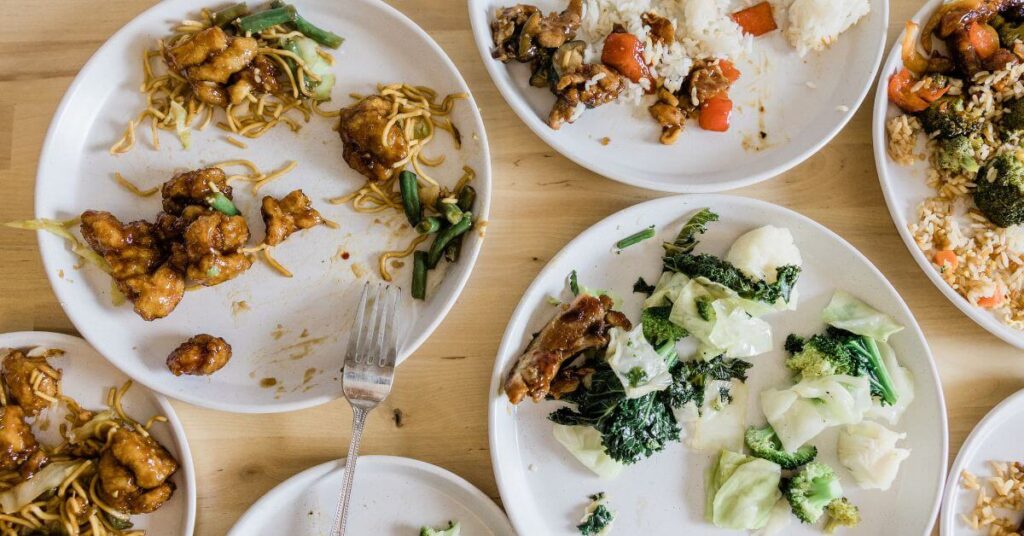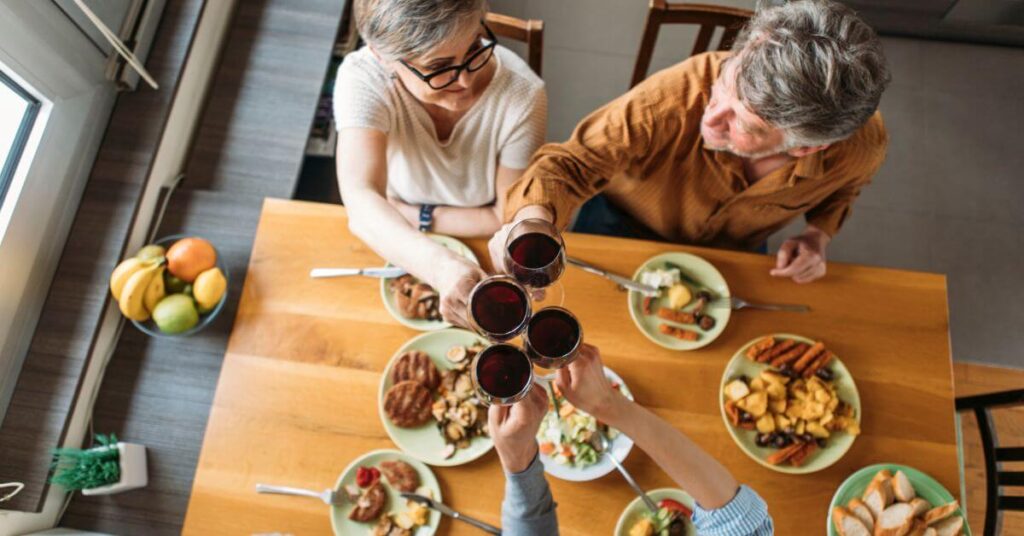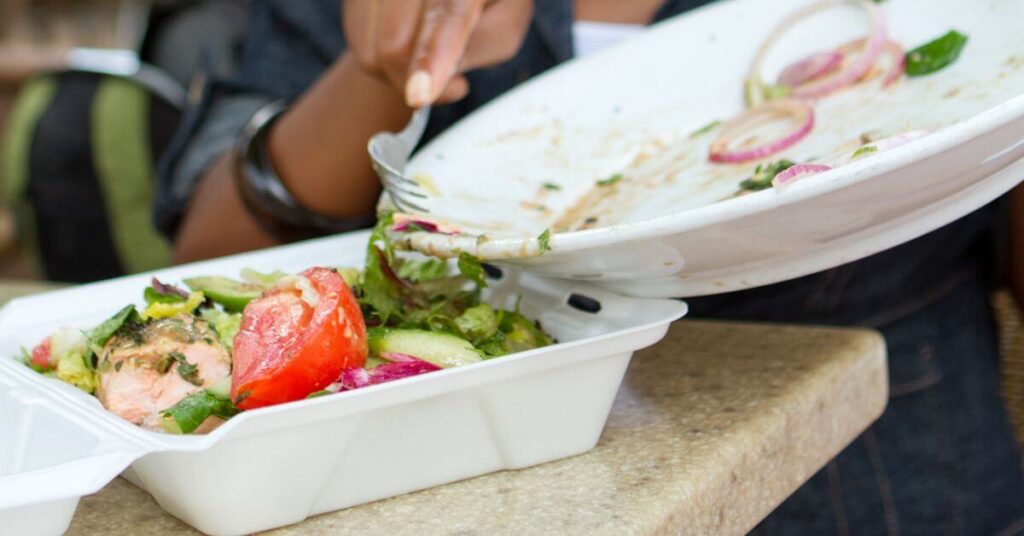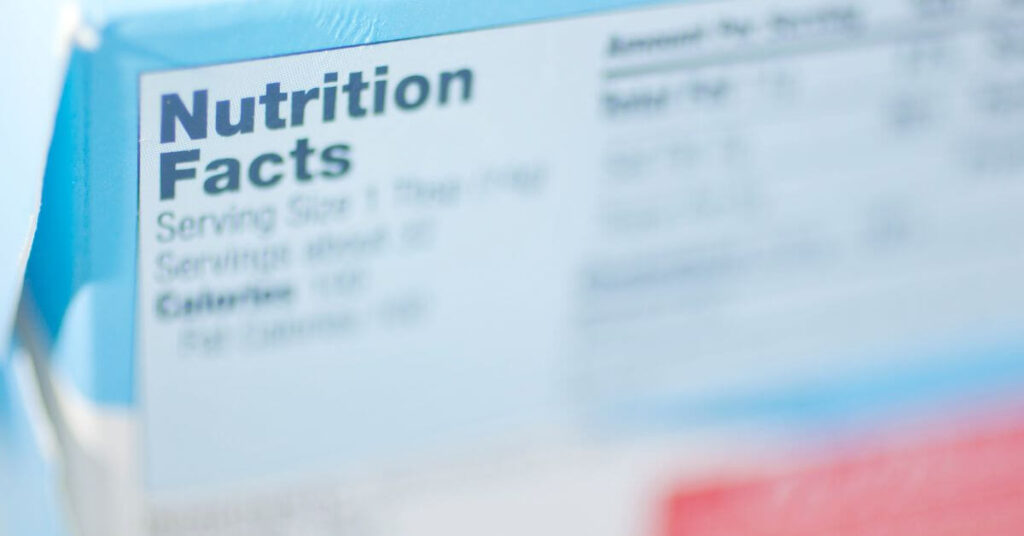Welcome back to the second part of our comprehensive guide on portion control for weight loss. In the first part, we introduced the concept of portion control and shared the first three tips to help you get started on this journey.
Before we jump back into the next five tips, let’s do a quick recap.
In Part 1, we discussed the importance of reassessing your plate, prioritizing nutrient-dense foods, and some practical tips for portion control. These foundational strategies are key to starting your journey towards better portion control and weight loss.
Now, in Part 2, we’re going to build on that foundation. We’ll explore more nuanced strategies that can help you further refine your approach to portion control. From learning to tune into your body’s signals to navigating the challenges of eating out and understanding food labels, these tips will equip you with the knowledge and skills you need to make portion control a seamless part of your lifestyle.
So, are you ready to take the next step in your portion control journey? Let’s continue!

Tip #4. Decrease Distractions When Eating
In today’s fast-paced world, it’s all too common to eat while scrolling through our phones, watching TV, or working at our desks. However, these distractions can lead us to consume more food without even realizing it. According to a report published by Harvard Health, not paying attention to a meal tends to make people eat more, and paying attention to a meal was linked to eating less later on. Here’s how you can decrease distractions and practice mindful eating to control portions:
- Create a distraction-free zone. Make your dining area a no-device zone. Put away your phone, turn off the TV, and focus solely on your meal. This allows you to be present in the moment and pay attention to how much food you’re eating, which is essential to controlling your portions.
- Enjoy your meal. Notice the colors, smells, textures, and tastes of your food. Chew slowly and savor each bite. This not only enhances your enjoyment of food but also gives your brain time to register fullness, helping you control how many calories you consume. If you’re feeling hungry, consider drinking water before your meal to help control portions.
- Eat slowly. It takes about 20 minutes for your brain to register that you’re full. Eating slowly can help you better recognize your body’s fullness cues and prevent overeating. This is a practical way to control how much food you’re consuming.
- Make mealtime special. Use a nice plate, light a candle, or play some soft background music. Making mealtime a special event can help you focus on your food and make mindful eating more enjoyable. It also gives you a chance to assess if you’re truly feeling hungry or if you’re just eating out of habit.
By decreasing distractions when eating, you can become more aware of what and how much you’re eating, which is a crucial part of portion control and weight loss. Remember, it’s not just about what you eat, but also how you eat. So, slow down, savor your food, and enjoy the experience.

Tip #5. Listen to Your Body’s Hunger Cues
One of the most empowering things we can do for our health is to tune into our bodies and listen to what they’re telling us. Our bodies are incredibly smart, and they send us signals all the time. One of the most important signals to pay attention to is hunger. According to a report by Harvard Health, we often eat when we’re not hungry due to emotions like anxiety, stress, anger, fatigue, sadness, and boredom. Misinterpreting these cues can lead to weight gain. Here’s how you can tune into your body’s hunger cues and manage the amount of food you consume:
- Understand your hunger cues. True hunger is a physical sensation that can feel like a growling stomach, low energy, or difficulty concentrating. It’s your body’s way of telling you it needs fuel. On the other hand, emotional hunger is driven by emotions, like stress, boredom, or sadness, and often leads to cravings for specific comfort foods. Misinterpreting these cues can lead to weight gain.
- Rate your hunger. On a scale of 1 to 10, with 1 being “starving” and 10 being “stuffed,” aim to eat smaller portions when you’re at a 3 or 4 (slightly hungry) and stop eating when you’re at a 6 or 7 (satisfied but not full). This can help you avoid overeating and stick to appropriate portion sizes.
- Don’t wait until you’re starving. If you wait until you’re extremely hungry to eat, you’re more likely to overeat and choose less healthy options. Regular, balanced meals and snacks can help keep your hunger in check. If you’re unsure whether you’re truly hungry, try drinking a glass of water first. Sometimes, our bodies can confuse thirst for hunger.
Listening to your body’s hunger cues is a powerful tool for maintaining healthy eating habits. It’s a practice used by many healthy women and has numerous benefits, including better weight management and a healthier relationship with food. So, the next time you feel hungry, pause, check in with your body, and respond with kindness and respect. Your body will thank you.

Tip #6. Don’t Pick at Leftovers
It’s a common scenario: you’ve finished your meal, served in proper portions, but there’s still food left on the table or on your children’s plates. While it might seem harmless to pick at these leftovers, those extra bites can add up, leading to extra calories that you may not have accounted for in your daily food intake. This could potentially lead to more weight gain over time. Here’s how you can resist the temptation:
- Acknowledge the waste dilemma. It’s important to recognize that while wasting food isn’t ideal, it doesn’t mean you should finish off everyone else’s portions. Your body’s needs should not be dictated by what’s left on the table. Stick to your planned portion size.
- Resist the temptation. Avoid the urge to nibble on leftovers when there’s not quite enough for a whole portion. Those little bites can add up more quickly than you might think, increasing your overall food intake. As the British Heart Foundation suggests, avoid the temptation to polish off children’s or grandchildren’s meals or to nibble at leftovers.
- Have a leftover plan. If you find that you regularly have leftovers, plan to incorporate them into another meal. This not only prevents waste but also helps you avoid the temptation to pick at them.
- Cook less. If you consistently have leftovers, consider cooking less. This can help ensure that there’s less food left over to tempt you, making it easier to stick to proper portions.
Remember, every bite counts. Even if you are eating a healthy meal, picking at leftovers can lead to consuming more calories than you realize. By implementing these strategies, you can avoid the leftover trap and stay on track with your portion control and weight loss goals.

Tip #7. Have a Plan Before Going Out to Eat
Navigating restaurant menus can be a challenge when you’re focusing on portion control. But with a strategic plan, you can enjoy dining out without compromising your weight loss goals. Here’s how you can control portion sizes when dining out:
- Step 1: Do your homework. Before heading to the restaurant, take a moment to review their menu online. Many establishments provide nutritional information, including serving sizes, which can help you make an informed decision about what to order. Compare these serving sizes to the recommended ones you’re familiar with. This will give you a clearer idea of how restaurant portions compare to the portion sizes you should be consuming.
- Step 2: Decide in advance. Make your meal selection before you arrive at the restaurant. This proactive approach can help you avoid impulsive decisions driven by hunger or tempting menu descriptions. Keep in mind the serving sizes you’ve researched and choose a meal that aligns with them.
- Step 3: Consider portion sizes. Restaurants often serve larger portions than necessary. Don’t hesitate to ask for a half portion or consider sharing a meal with a dining companion. This can help you stick to appropriate serving sizes without feeling deprived.
- Step 4: Start smart. Begin your meal with a salad (dressing on the side) or a broth-based soup. These low-calorie, high-volume choices can help curb your appetite, making it easier to control your portion sizes for the main course.
- Step 5: Tune into your hunger cues. Pay attention to your body’s signals. If you feel satisfied, it’s perfectly acceptable to leave food on your plate. Remember, you’re eating to nourish your body, not to clear your plate.
- Step 6: Embrace leftovers. If the portion is too large, ask for a takeaway box right away. You can enjoy the rest of your meal later, preventing overeating in one sitting and getting another meal out of your restaurant visit.

Remember, the goal is not to feel restricted, but to make mindful choices that align with your portion control and weight loss goals. With a little planning and a clear understanding of serving sizes, you can enjoy the convenience and pleasure of dining out without derailing your progress.

Tip #8. Check Food Labels: A Key Step Towards Healthy Eating
Reading food labels might seem like a chore, but it’s actually a secret weapon in your portion control arsenal. The nutrition facts label on food packaging is a treasure trove of information that can help you make healthier choices, control your portion sizes, and consume fewer calories. Here’s a fun and easy guide to making the most of food labels:
- Find the serving size. Start by looking at the serving size on the nutrition label. This is the amount of food that the rest of the information on the label is based on. You might be surprised to find that what you thought was a single serving is actually two or three! This is especially common with energy dense foods, so be sure to check.
- Check the calories. Next, look at the calories per serving. Remember, if you eat two servings, you’ll be getting twice the calories. This can help you decide if a food fits into your calorie budget for the day and can help you consume fewer calories.
- Look at the nutrients. Now, check out the nutrients. Try to limit foods high in saturated fat, trans fat, sodium, and added sugars. Instead, look for foods high in fiber, vitamins, and minerals. Also, consider the food groups the item belongs to and how it fits into your overall diet.
- Make it a game. Turn label reading into a game. Challenge yourself to find the healthiest option or the product with the lowest amount of added sugars. This can make grocery shopping more fun and help you make healthier choices.
- Practice, practice, practice. The more you check food labels, the easier it becomes. With practice, you’ll be able to quickly and easily make healthier choices and control your portion sizes.

Remember, knowledge is power. By understanding how to read a nutrition facts label, you can make informed decisions about the food you eat, control portion sizes, and better manage your diet. So, next time you’re at the grocery store, take a moment to check the label. Your body will thank you!
Embracing Portion Control: A Sustainable Strategy to Lose Weight
Portion control is not about deprivation or drastic diet changes. It’s about understanding what our bodies need and providing just that. It’s about making small, sustainable changes that can have a big impact on our health and weight.

To make portion control a sustainable weight loss strategy, remember to try these simple steps:
- Reassess your plate: Prioritize nutrient-dense foods.
- Minimize distractions while eating.
- Listen to your body’s hunger cues.
- Avoid picking at leftovers.
- Plan ahead before going out to eat.
- Check food labels for better choices.
Remember, everybody is unique, and what works for one person may not work for another. It’s about finding what works for you and your body. And the best part? You don’t have to do it alone.

Concluding Our Journey: Mastering Portion Control for Weight Loss
There you have it! We’ve now covered all eight tips in our comprehensive guide on portion control. From reassessing your plate to understanding food labels, these strategies are designed to help you make portion control a seamless part of your lifestyle.
Remember, knowledge is just the first step. The real magic happens when you start applying these strategies in your daily life. It may take some time and practice, but I promise you, it’s worth it. Portion control is not just about losing weight—it’s about creating a healthier and more balanced relationship with food.
Take the Next Step Towards Your Weight Loss Journey
If you’re ready to embrace portion control and take the next step in your weight loss journey, I invite you to book a complimentary consultation with me. Together, we can create a personalized plan that fits your lifestyle and helps you achieve your health and weight loss goals. Because you deserve to feel your best, and I’m here to help you do just that.
Ready to get started? Book your complimentary consultation today.





